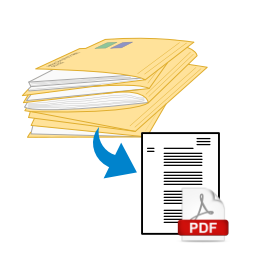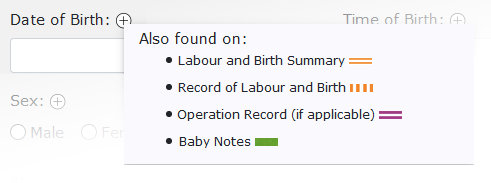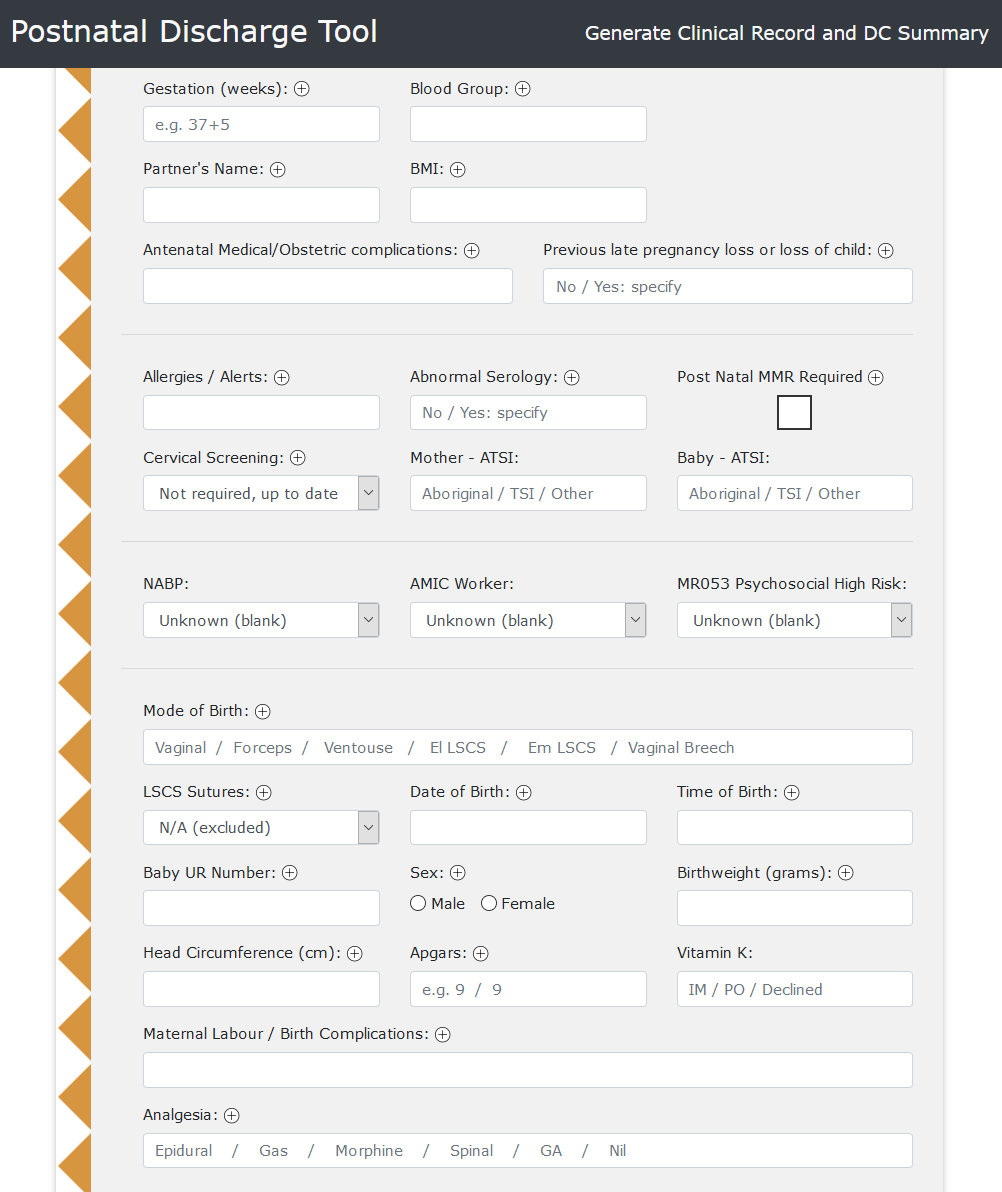

Postnatal discharge documentation at a busy obstetric department requires the collation of 75 data points from various sources. With 6-18 discharges per day this reflects up to 1350 data points (or 3 data points per minute).
A Microsoft Word template was being used, with clear efficiency drawbacks at these high volumes. The medical officer undertaking the task would often be a doctor unfamiliar with the local paperwork and where to find the relevant information.
The existing Word template was operationalised as a browser-based tool. Doctors enter data into the tool which then generates both a clinical record and a discharge summary. To speed up data entry, the fields are grouped by source material and presented in the same order as the information appears on the source material.
Various visual cues help to identify where to find source materials, and there are popup help panels that suggest additional places information can be found.
Since its release in 2019 the Postnatal Discharge Tool has been used more than 2,000 times.


The tool objectively improved efficiency, with colleagues reporting completion of workload hours sooner than would have been the case otherwise.
Before the tool was implemented, doctors on busy shifts would print the Word template and revert to handwriting onto it. This meant that data would need to transcribed at a later date when preparing the discharge summary, and resulted in a significant backlog of incomplete work.
Because the tool generates both the clinical record and the discharge summary, its use remains more efficient than handwriting even on busy discharge days. As a result, more discharge summaries are being completed on day of discharge.